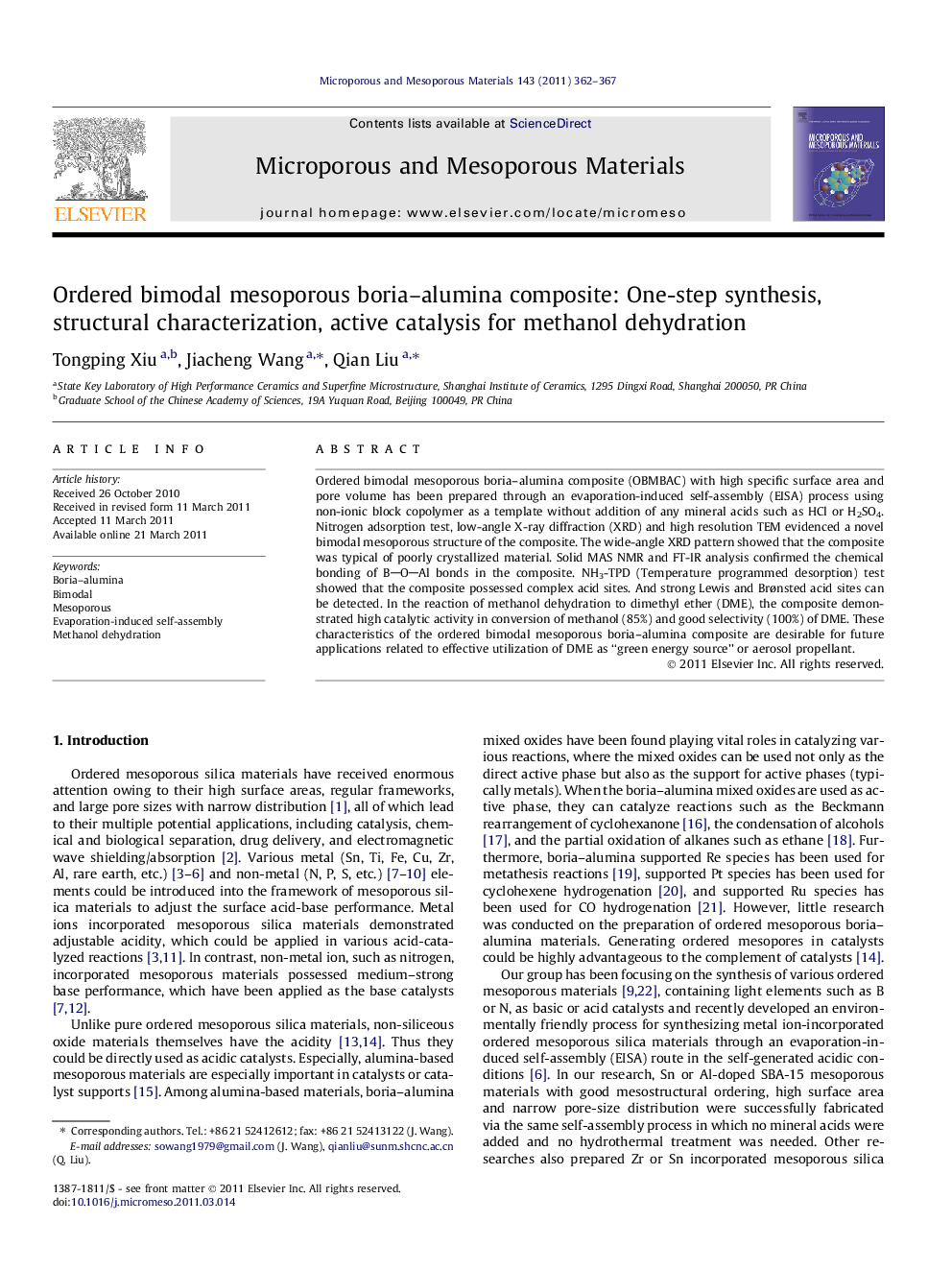| Article ID | Journal | Published Year | Pages | File Type |
|---|---|---|---|---|
| 74407 | Microporous and Mesoporous Materials | 2011 | 6 Pages |
Ordered bimodal mesoporous boria–alumina composite (OBMBAC) with high specific surface area and pore volume has been prepared through an evaporation-induced self-assembly (EISA) process using non-ionic block copolymer as a template without addition of any mineral acids such as HCl or H2SO4. Nitrogen adsorption test, low-angle X-ray diffraction (XRD) and high resolution TEM evidenced a novel bimodal mesoporous structure of the composite. The wide-angle XRD pattern showed that the composite was typical of poorly crystallized material. Solid MAS NMR and FT-IR analysis confirmed the chemical bonding of BOAl bonds in the composite. NH3-TPD (Temperature programmed desorption) test showed that the composite possessed complex acid sites. And strong Lewis and Brønsted acid sites can be detected. In the reaction of methanol dehydration to dimethyl ether (DME), the composite demonstrated high catalytic activity in conversion of methanol (85%) and good selectivity (100%) of DME. These characteristics of the ordered bimodal mesoporous boria–alumina composite are desirable for future applications related to effective utilization of DME as “green energy source” or aerosol propellant.
Graphical abstractOrdered bimodal mesoporous boria–alumina composite with high specific surface area and pore volume has been prepared through an evaporation-induced self-assembly (EISA) process using non-ionic block copolymer as a template without addition of any mineral acids such as HCl or H2SO4.Figure optionsDownload full-size imageDownload as PowerPoint slideHighlights► One-pot synthesis of bimodal mesoporous boria–alumina composite without mineral acids. ► It possessed not only high surface area and pore volume, but also dual narrow pore size distributions. ► Strong Brønsted and Lewis acid sites in the composite. ► High activity for the dehydration of methanol.
